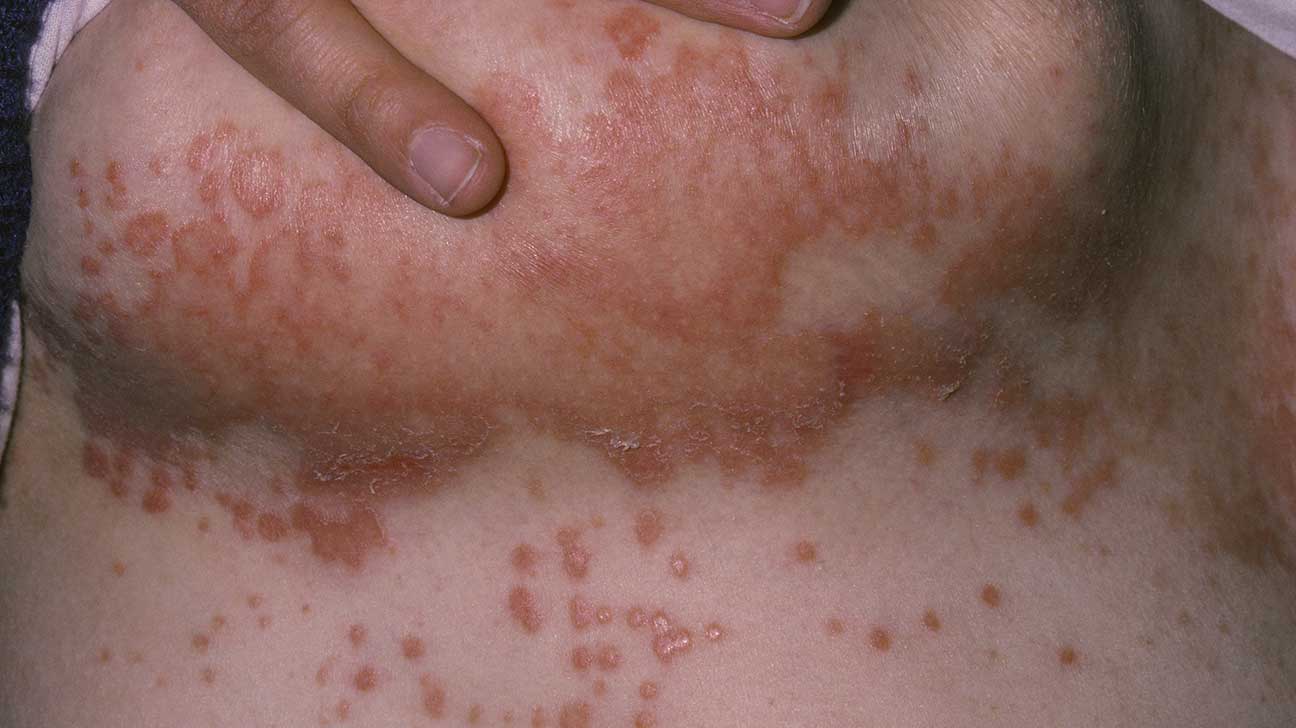
The often-unacknowledged reality for individuals with substantial breast volume is the pervasive and chronic dermatological burden that accompanies the increased tissue mass. Beyond the frequently discussed musculoskeletal issues such as chronic back, neck, and shoulder pain, a more insidious challenge exists in the form of persistent skin irritation and infection. This issue is not merely a fleeting cosmetic inconvenience but a tangible reduction in quality of life, stemming from the unique microenvironment created beneath the breast fold. The area where the inframammary fold meets the chest wall becomes a zone of high-intensity friction, elevated temperature, and relentless moisture retention, setting the stage for a range of dermatological conditions. Understanding this dynamic interplay between anatomy and environment is crucial for both management and appreciation of the daily discomfort experienced by those with macromastia or simply disproportionately large breasts. The skin’s integrity in this specific region is constantly compromised by a trio of compounding physical stressors.
…The area where the inframammary fold meets the chest wall becomes a zone of high-intensity friction, elevated temperature, and relentless moisture retention…
The Anatomical Precursors: Friction, Heat, and Persistent Moisture Accumulation
The foundational cause of skin irritation beneath a large breast is a straightforward combination of mechanical and environmental factors. Large, often pendulous breasts naturally create a deep, warm skin-on-skin fold, a situation anatomically known as a skin intertriginous area. Within this confined space, the lack of air circulation, coupled with the constant pressure and rubbing of the skin surfaces against each other—the frictional element—leads to a breakdown of the stratum corneum, the skin’s protective outer layer. Simultaneously, sweat and natural skin oils become trapped, unable to evaporate efficiently due to the physical barrier of the breast tissue. This creates a persistently moist and humid climate, essentially a miniature greenhouse environment. This warm, damp, and mechanically stressed skin provides an ideal, nutrient-rich substrate for the proliferation of various opportunistic microorganisms, rapidly transitioning from a simple rash to a potential infection. The constant mechanical stress and the resultant barrier dysfunction fundamentally initiate the cascade of inflammatory issues that follow.
…This warm, damp, and mechanically stressed skin provides an ideal, nutrient-rich substrate for the proliferation of various opportunistic microorganisms…
The Primary Dermatological Manifestation: The Condition Known as Intertrigo
The most common consequence of the challenging environment under large breasts is a skin disorder called intertrigo. This inflammatory condition is characterized by a symmetrically distributed rash that presents with redness, often a raw, macerated appearance, and sometimes a slight erosion or cracking of the skin surface. The friction and moisture combination causes the skin cells to swell and slough off prematurely, leading to a raw, sensitive patch that can be intensely itchy and painful. If left unchecked, the breakdown of the skin’s barrier opens the door to secondary infection. The condition can range from a mild, temporary discomfort to a chronic, debilitating state, significantly impacting sleep, exercise, and general well-being. The discomfort is often exacerbated by movement, making even simple activities a source of renewed irritation.
…The friction and moisture combination causes the skin cells to swell and slough off prematurely, leading to a raw, sensitive patch that can be intensely itchy and painful.
The Opportunistic Invasion: Fungal and Bacterial Secondary Infections
The warm, moist, and damaged skin of intertrigo serves as a prime breeding ground for pathogenic organisms that are typically kept in check on healthy skin. Fungal infections, particularly those caused by Candida albicans, a yeast, are extremely common secondary invaders. When a candidal infection takes hold, the rash often develops satellite lesions—small, separate patches of inflammation surrounding the main affected area—and can sometimes produce a creamy-colored discharge and a distinctive, unpleasant odor. Bacterial infections, often staphylococcal in nature, can also complicate the situation, leading to cellulitis or follicular infections. Distinguishing between purely inflammatory intertrigo, a fungal infection, or a bacterial colonization is a necessary step for effective treatment, as each requires a different class of topical or systemic medication. The need for precise diagnosis underscores why self-treatment is often only partially effective.
…Fungal infections, particularly those caused by Candida albicans, a yeast, are extremely common secondary invaders.
Beyond the Fold: Hyperpigmentation and Hidradenitis Suppurativa
While intertrigo is the dominant concern, large breasts can contribute to other less common but significant dermatological issues. Chronic inflammation and persistent rubbing can eventually lead to post-inflammatory changes, most visibly hyperpigmentation, where the skin in the inframammary fold darkens over time. This is a purely aesthetic consequence but can be a source of self-consciousness. Furthermore, the combination of friction and concentration of sweat glands in the axillary and infra-mammary regions can sometimes be a cofactor in the development of hidradenitis suppurativa (HS), a chronic, inflammatory skin condition that causes painful lumps and abscesses. Although HS is a complex disease with multiple contributing factors, the localized friction and occlusion beneath large breasts can certainly worsen the frequency and severity of flare-ups in this region. This demonstrates that the impact is not limited to surface-level rashes.
…the combination of friction and concentration of sweat glands in the axillary and infra-mammary regions can sometimes be a cofactor in the development of hidradenitis suppurativa (HS)…
The Critical Role of Proper Bra Fit: Minimizing Friction and Maximizing Lift
The foundation of managing and preventing skin irritation in individuals with large breasts begins with addressing the mechanical component of friction and skin apposition. A properly fitted, supportive bra is arguably the single most important non-medical intervention. A bra that provides insufficient lift or poorly designed support allows the breast tissue to drag against the chest wall, creating the deep, hot fold and maximizing skin-on-skin rubbing. Conversely, a bra that correctly lifts the breasts and separates the inframammary crease from the upper abdomen minimizes the contact zone and promotes essential air circulation. The fabric choice is equally critical; materials that are breathable and moisture-wicking, such as high-performance synthetic blends or natural cotton, are superior to non-breathable synthetics that trap heat and moisture. Ill-fitting undergarments not only fail to address the problem but can actively contribute to it.
…A bra that correctly lifts the breasts and separates the inframammary crease from the upper abdomen minimizes the contact zone and promotes essential air circulation.
Topical Management Strategies: The Importance of Barrier and Antifungal Agents
Immediate and ongoing management of the irritated skin relies heavily on a precise topical regimen. The first line of defense after ensuring cleanliness and dryness is the use of barrier creams, often containing zinc oxide or petrolatum, which create a physical layer to protect the damaged skin from further friction and moisture. For confirmed candidal infections, which is often the case, over-the-counter or prescription-strength antifungal creams are essential for eradicating the yeast overgrowth. In cases of significant inflammation and redness without deep infection, a short course of a mild topical corticosteroid might be used to reduce the inflammatory response. The long-term goal shifts from reactive treatment to proactive prevention, utilizing dusting powders, breathable cloth interlayers, or specialized bra liners designed to draw moisture away from the skin’s surface and maintain a dry environment.
…The long-term goal shifts from reactive treatment to proactive prevention, utilizing dusting powders, breathable cloth interlayers, or specialized bra liners…
The Influence of Systemic Factors: Weight Fluctuation and Underlying Health Conditions
The severity and frequency of intertrigo and related skin issues can be significantly influenced by systemic health factors. Individuals who are overweight or obese often experience deeper, more extensive skin folds in the infra-mammary and abdominal areas, which exacerbates the core issues of moisture and friction. Weight loss, by reducing the overall volume and pendulousness of the breast and body tissue, can often dramatically alleviate the chronic nature of the skin irritation. Furthermore, underlying conditions like poorly controlled diabetes mellitus create a state of immunosuppression and an increased glucose level in bodily fluids, making the skin particularly susceptible to candidal infections. Addressing these systemic issues—through dietary changes, medication management, or lifestyle modifications—is a necessary complement to topical treatments for sustainable relief.
…Individuals who are overweight or obese often experience deeper, more extensive skin folds in the infra-mammary and abdominal areas, which exacerbates the core issues of moisture and friction.
The Threshold for Surgical Intervention: When Conservative Measures are Insufficient
For a significant subset of the population, particularly those with true macromastia, all conservative measures—corrective bras, diligent hygiene, topical medications, and addressing systemic issues—provide only temporary or insufficient relief. The sheer volume and weight of the breast tissue create an intractable mechanical problem that topical solutions cannot overcome. In these severe, chronic cases, where recurrent, refractory intertrigo significantly diminishes the patient’s quality of life, breast reduction surgery, or reduction mammoplasty, may be considered a medically necessary intervention. By permanently reducing the breast size, the surgeon fundamentally alters the anatomy, eliminating the deep, moisture-trapping skin fold and removing the source of constant friction and pressure, thus resolving the chronic dermatological cycle. This surgical pathway is often viewed as the final, definitive solution to a debilitating, chronic skin condition.
…By permanently reducing the breast size, the surgeon fundamentally alters the anatomy, eliminating the deep, moisture-trapping skin fold and removing the source of constant friction and pressure…
Chronic Pain and Sleep Disruption: The Broader Impact on Daily Function
The cyclical nature of inframammary irritation is often overlooked in its overall impact on a person’s life. The itching, burning, and soreness do not simply disappear at the end of the day; they frequently become a significant source of sleep disruption. The intense pruritus (itching) can lead to scratching, which further damages the skin barrier, creating a vicious cycle of irritation, secondary infection, and re-injury. This chronic discomfort influences clothing choices, limits participation in physical activities that exacerbate sweating and friction, and necessitates an exhausting, perpetual commitment to skin management. The resulting chronic pain and disturbed sleep contribute to a general decline in energy and mood, illustrating that a simple ‘rash’ beneath the breast can cascade into far-reaching impacts on emotional and physical well-being.
The persistent friction, heat, and moisture under large breasts create a chronic dermatological burden often leading to intertrigo, a medically manageable but deeply uncomfortable condition.
